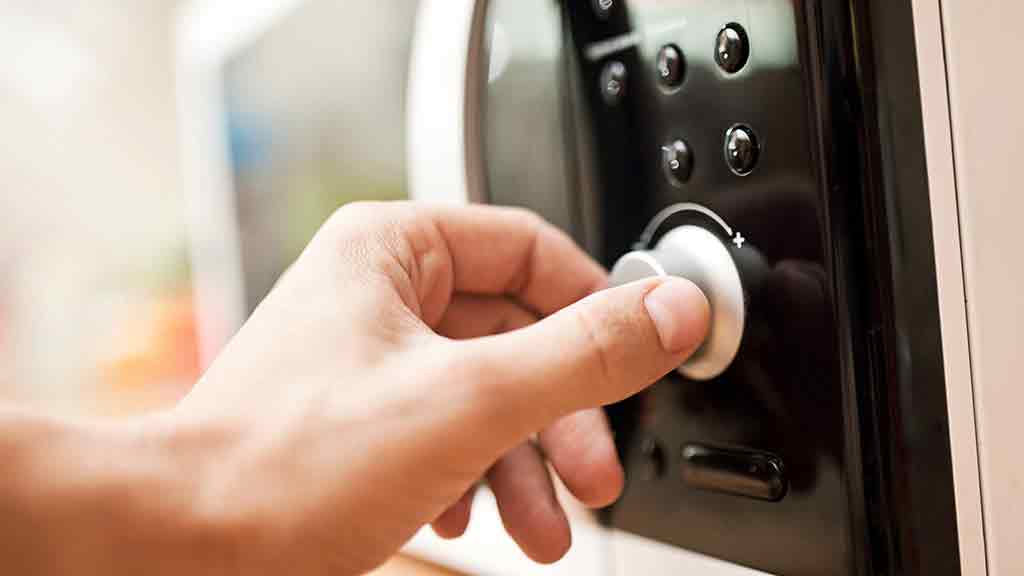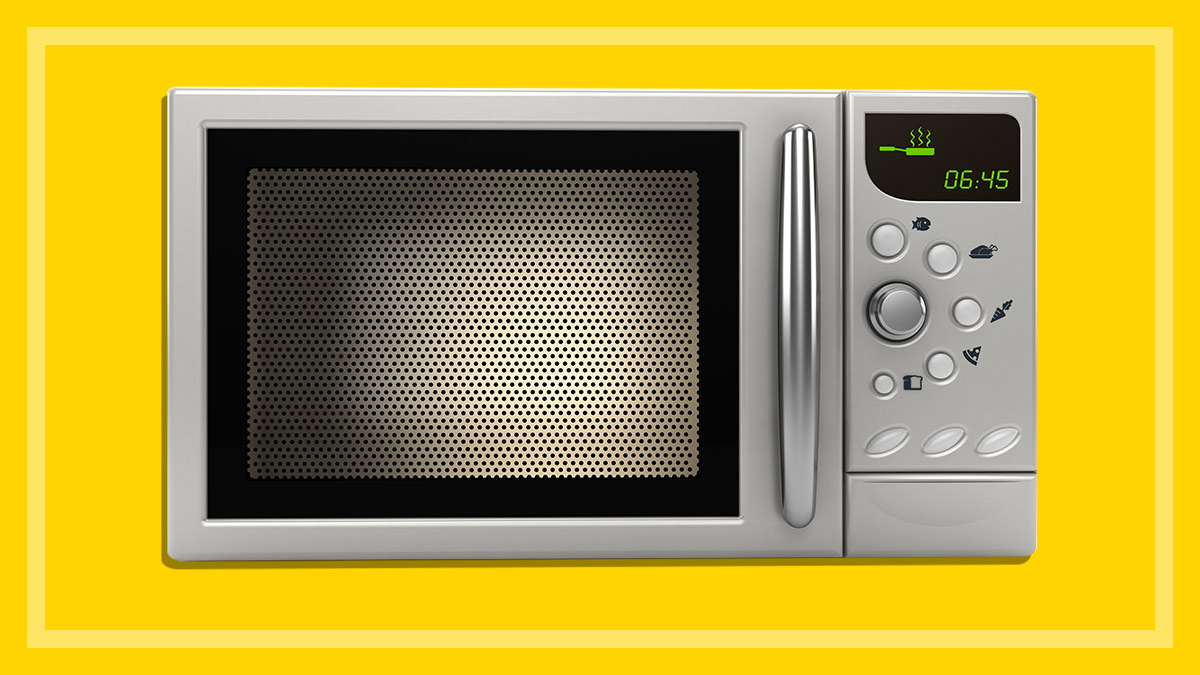Get our independent lab tests, expert reviews and honest advice.
Microwave cooking tips
How to get the most out of your microwave.
Last updated: 24 Aug 2018

Most people use very little of their microwave’s potential. New models come with a multitude of functions, which can help you cook quickly, stay healthy and save money. And don’t forget, most microwaves also come with a booklet full of easy recipes, from classic cakes to ‘fried’ rice, to give you a whole new perspective on what they can do.
How to defrost
- Raw poultry and meat can contain bacteria such as salmonella and listeria, which can give you the very unpleasant (and potentially dangerous) experience of food poisoning. To avoid this, make sure you store, defrost and cook meat and poultry properly. Keep raw meats away from ready-to-eat meals and always store below 4°C.
- Food authorities recommend defrosting poultry or meat in cold water, your fridge, or using a microwave; don’t defrost by leaving at room temperature on the bench top.
- The auto defrost function on your microwave is useful: you can defrost by weight (the defrost time is determined by the oven when you enter the weight of the food) or by time. Some microwaves beep during the defrost cycle, which means you need to check the meat, turn it over, shield with small pieces of foil and possibly remove any thawed parts.
- Freeze food in portions, lay flat separating each piece with greaseproof paper or cling wrap.
How to defrost a whole chicken
- If you’re defrosting a whole chicken, put it on a microwave-proof rack so that the meat doesn’t sit in its own juices and melted ice and start to cook.
- When the microwave beeps, turn the chicken over and cover the wings and legs with foil so they don’t cook.
- To protect the wings and legs when defrosting a whole chicken, small squares of foil can be used to cover them just make sure there is less foil than food, and that none of the foil touches the walls of the microwave.
- No parts of the meat should start to get warm and/or brown during defrosting. Also, defrosting meat in its wrapping is a no-no. After defrosting, let the meat stand so it can reach a uniform temperature. Remove defrosted portions of mincemeat during defrosting and allow to rest for 10 minutes.
- After defrosting a whole chicken, rinse the cavity with cold water and allow to stand for 15 minutes.
- Separate small cuts of meat during defrosting such as sausages, chicken pieces, cutlets etc.
Understanding your microwave’s power levels
- The power level controls how often the heating comes on during cooking and lets you control the heating intensity. For example, power level 6 may mean the heating is on for 60% of the time. The fan runs the whole time to circulate air, while the heating turns on and off to achieve optimum cooking.
- If no power setting is selected, the microwave will cook on high by default.
- Most microwaves have auto cook functions and these are well worth using.
- There can be up to 10 power settings for various functions (defrosting, reheating and boiling).
- Know the wattage of your microwave – it’s important when you’re working out the defrosting and cooking times. The wattage is often stated clearly on the front of the oven, but in any case it should be marked on the appliance plate on the back or base of the oven.
- Using the correct power settings for different foods can give a better final result. It’s a good idea to check the manufacturer’s instructions, but the following is a guide on what the different power settings are best used for:
100% (High)
- Boiling water
- Browning minced beef, cooking poultry pieces, fish, vegetables
- Cooking tender cuts of meat
80–70% (Medium high)
- All reheating
- Roasting meat and poultry, shellfish
- Delicate foods containing cheese and eggs
60–50% (Medium)
- Puddings and cakes
- Sauces, custard
- Steamed rice, soup
40–30% (Medium low)
- Defrosting
- Melting butter and chocolate
20% (Low)
- Softening butter and cheese
- Softening ice cream
- Proving yeast dough
10%
- Keep warm
Cooking times
- Your microwave oven’s instruction book will suggest cooking times for various dishes and cooking tasks. These are based on the wattage of the oven and the recommended power levels.
- Packet and frozen meals will recommend microwave cooking times, but should also indicate the wattage that time is based on.
- If you aren’t sure what cooking time to set, remember that the more powerful the oven, the faster the cooking – a 1000W oven will cook significantly faster than an 850W oven, especially when the cooking time is a few minutes or more.
- If you’ve replaced an old microwave with a new more powerful model, you’ll need to reduce the cooking times that you’ve become used to. A dish that takes five minutes to cook in an 850W oven might need only four minutes in a 1000W oven.
Tips for reheating and cooking
Plastics
- Not all containers are suitable for microwave use.
- High cooking temperatures can cause some plastics to break down and contaminate the food in the container.
- Only use containers labelled as “microwave safe”.
- Putting a “microwave-safe” container into the microwave means it’s not going to overheat, break, melt or cause burns when handled.
- However, “microwave-safe” containers may only be suited to reheating, not cooking or boiling food.
- Foods high in fat and sugar can cause a microwave-safe container to become extremely hot. Use heat resistant glass containers and always protect your hands when removing cooked food.
- Avoid plastic containers for cooking and only use microwave-safe plastic containers for reheating on a medium power level.
- To check if your container is “microwave safe”, place it in the microwave with no food or liquid along with a small microwave-safe container filled with water. Heat for 1 minute on high and if the outside of the container has not heated then it’s safe to use. If it’s warm, it can be used for reheating but if it’s hot, then it isn’t microwave safe.
Foil and aluminium
- These materials, and dishes with metallic glazes, shouldn’t generally be used in microwaves as they can cause sparking.
- Small pieces of aluminium foil are usually OK, such as when you’re protecting the tips of the wings and legs while defrosting a whole chicken.
Cover food
- Use a lid, microwave-safe plastic wrap or paper, but don’t let plastic come in direct contact with the food – it’s likely to melt into it.
- Covering food helps hold moisture and even out heat distribution.
- Microwave-safe containers shouldn’t overheat, break, or melt. However, they can still be hot afterwards, so use an oven mitt if appropriate and handle them carefully.
- Some microwave-safe containers may only be suitable for reheating, not cooking or boiling.
Foods high in fat and sugar
- These can cause a microwave-safe container to become extremely hot. In this case, use heat-resistant glass containers and protect your hands when removing cooked food.
Safe temperatures
- When cooking or reheating, all areas should be above 70°C. Foods that remain in the danger zone of 4°C to 60°C make a great breeding ground for harmful microorganisms.
Standing times
- These are recommended after cooking for non-stirrable foods, to allow them to reach an even temperature.
- For stirrable foods, stir part way through the cycle to allow for even heating. Always allow non-stirrable foods to stand for five minutes before serving.
Size, quantity and shape
- Try to keep food as uniform as possible. Reheat/cook in small portions to allow for more even heating. Put any larger or thicker pieces towards the outside of the dish.






